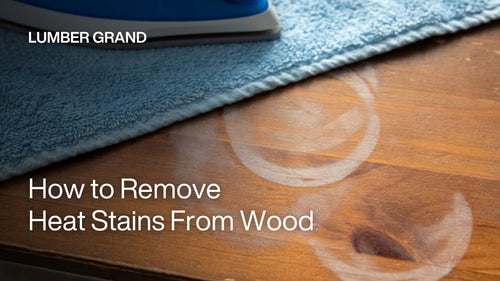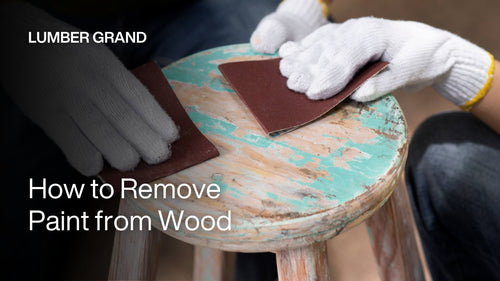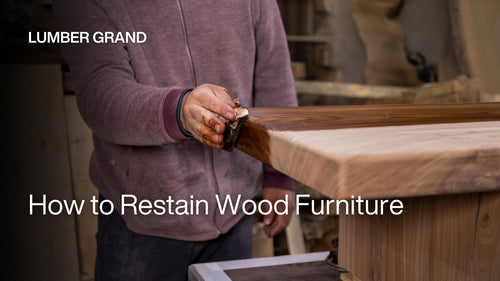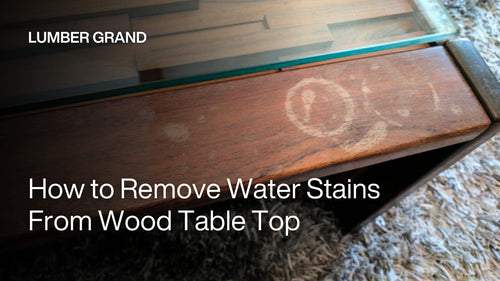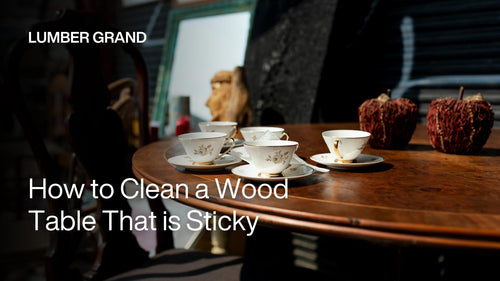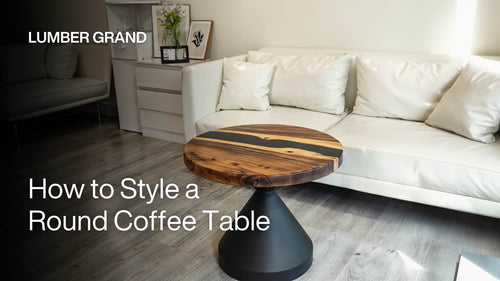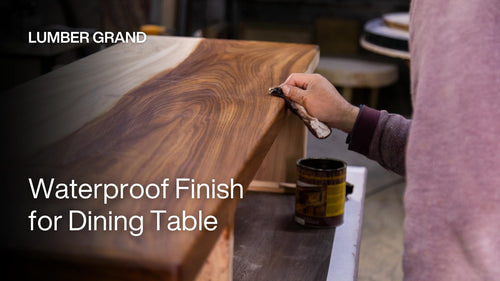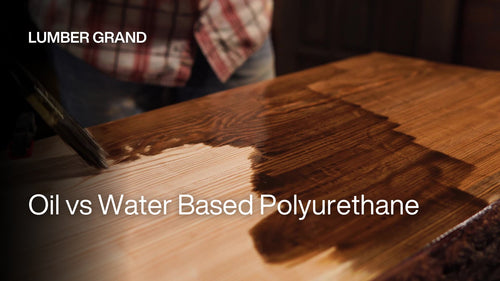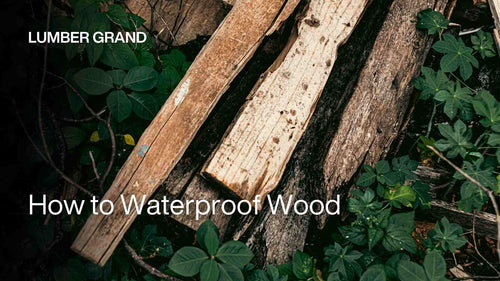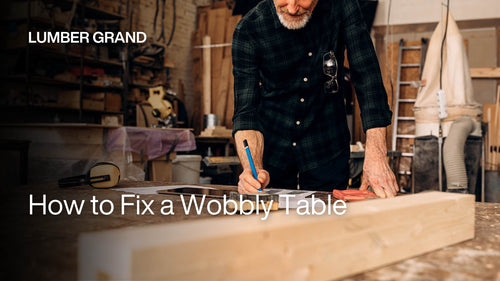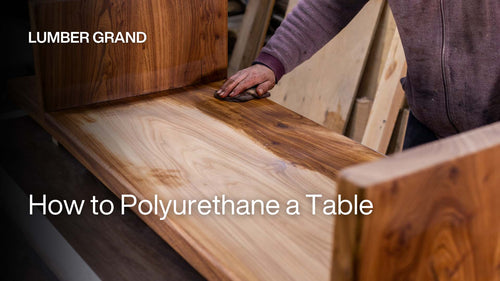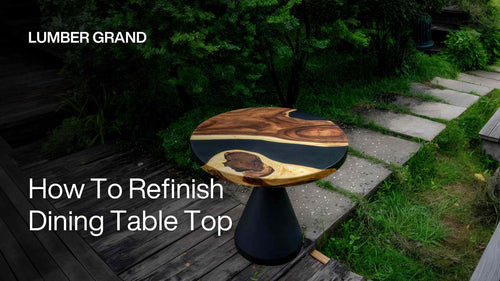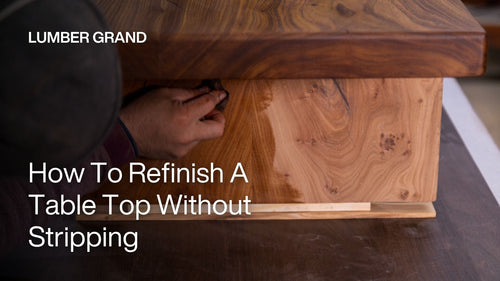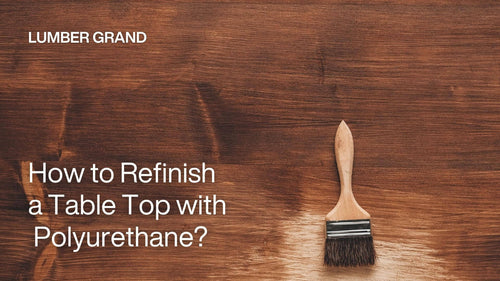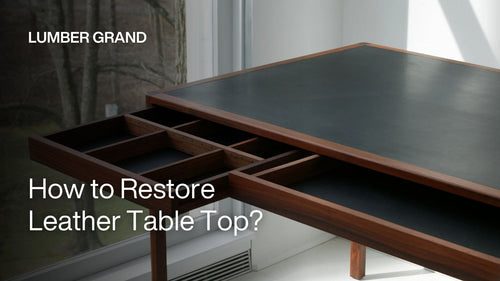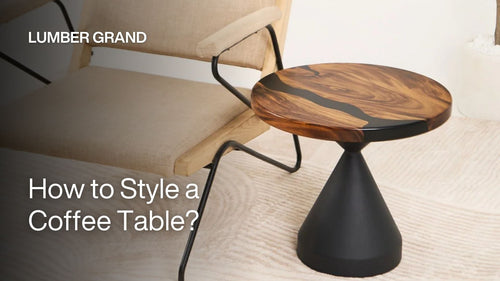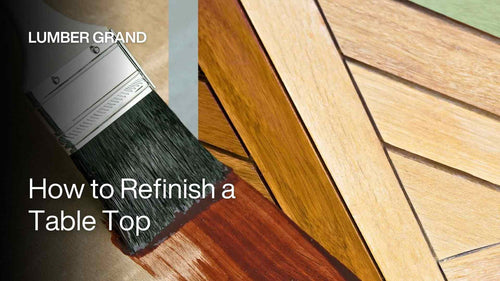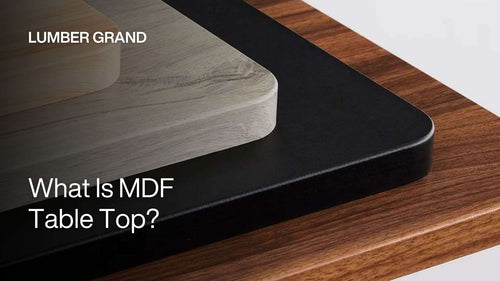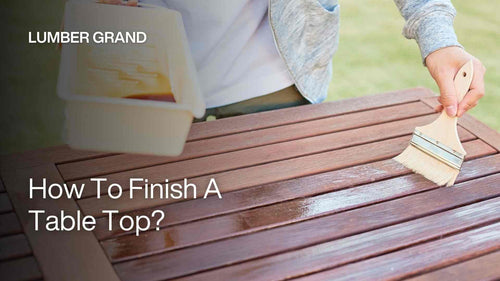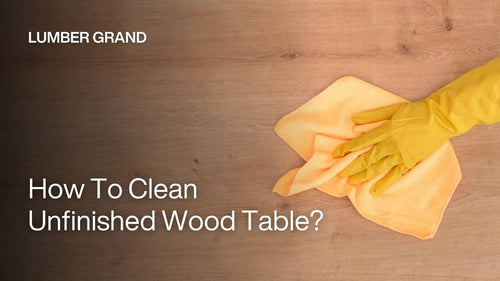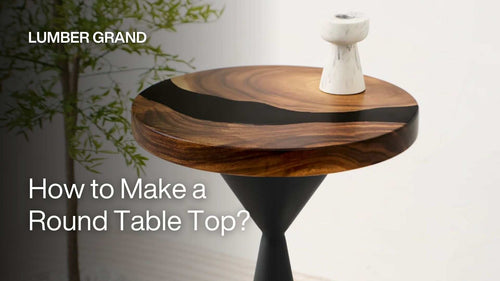How to sand down burnt epoxy on table? The right sanding technique can restore your epoxy table to a flawless finish. Epoxy tables are stunning, but sometimes, things don't go as planned - maybe you overworked the resin with a heat gun, or a hot object left a burn mark. Read on below to find out how to fix it!
How to Sand Down Burnt Epoxy on Table?
To know how to sand down burnt epoxy on table, you should start with high-grit sandpaper and gradually increase to finer grits. Professional woodworkers often use wet sanding because it is often the most effective and helps to limit scratches. After sanding, you need to polish to restore the perfect shine. Here are step-by-step instructions from Lumber Grand:
1. Step 1: Preparation
Before you dive into how to sand down burnt epoxy on table, take a moment to gather everything you need, because it will save you a lot of frustration later:
- Sandpaper (starting from 120 grit for rough patches up to 2000 grit).
- A sanding epoxy resin table top block or orbital sander (making your job easier, especially for larger surfaces).
- Water (for wet sanding).
- Microfiber cloths (wiping away dust).
- Polishing compound (for finishing).
- Safety gear: gloves, mask, and goggles.
Before you begin, clear your workspace. Make sure there’s enough ventilation so you’re not breathing in epoxy dust. Wipe down the table to remove any loose debris. Starting with a clean surface makes all the difference when restoring your epoxy table.

Gather your tools and set up a clean workspace
Photo: ©BGStock72 on Canva.com
2. Step 2: Dry Sanding vs. Wet Sanding - Which One to Use?
Both wet and dry sanding have their uses, and knowing when to use them will save time and energy while avoiding further damage to the countertop.
Dry sanding is used when removing a thick layer of epoxy or if the burn only affects the surface. After the burn is gone, wet sanding refines the surface and prevents scratches. This method is suitable for burns that do not require heavy sanding. Wet sanding reduces friction and prevents heat build-up that can damage the epoxy.
How to perform each method:
-
Dry Sanding: Attach coarse-grit sandpaper (120-220) to a sanding epoxy resin table top block or an orbital sander. Sand in even, circular motions, applying light pressure.
-
Wet Sanding: Dip fine-grit sandpaper (400+) in water and gently sand in a back-and-forth motion. Keep the surface damp at all times. If it dries out, add more water and wipe it occasionally to check progress.
 Choose the right method based on the burn depth and desired finish
Choose the right method based on the burn depth and desired finish
Photo: Mellowpine
3. Step 3: Start with Coarse Grit Sandpaper
If the burn is deep, begin with 60-80 grit sandpaper and gradually move to 120-150 grit. Use steady, even pressure to sand down the damaged area. Be patient! Don’t rush this step, as removing too much material can create uneven spots.
4. Step 4: Move to Finer Grits for a Smooth Finish
Once the burn mark is gone, gradually move up to 400, 800, and even 1000 grit. The goal here is to smooth out the scratches left by the coarser sandpaper. If you’re wet sanding, keep the surface lubricated to prevent any swirl marks.
5. Step 5: Achieve a Glass-Like Finish with Polishing
After all the sanding help your epoxy table might look smooth, but it won’t shine yet. After sanding with 2000 grit sandpaper, if you want the epoxy to be shiny, follow these steps:
-
You need to choose the right polishing compound, specifically using a specialized type to achieve a glass-like shine such as: Meguiar's Mirror Glaze, 3M Perfect-It, Novus Plastic Polish.
-
Next, apply the polish to a microfiber cloth or polishing pad.
-
Note that you polish in a circular motion, applying even pressure to remove small scratches. Continue polishing until the surface is shiny, you can apply a second coat if necessary.
 Buff the surface to restore a flawless, high-gloss shine
Buff the surface to restore a flawless, high-gloss shine
Photo: Triple L Rustic Designs
 Elevate your home with a stunning, one-of-a-kind piece
Elevate your home with a stunning, one-of-a-kind piece
Photo: Lumber Grand
Shop now: Round Black Epoxy River Table Top 29 Inches
Common Mistakes & How to Fix Them
Even experienced DIYers make mistakes when learning how to sand down burnt epoxy on table top. Here are a few common ones you might have, and how to avoid them:
-
Sanding too hard can scratch the epoxy: Applying too much pressure while sanding epoxy table top can leave deep scratches on your table top. Always use light, even pressure, and gradually work through finer grits to remove imperfections.
-
Not sanding with enough grit can cause uneven surfaces: Skipping grit levels can result in an uneven or cloudy finish for your table top. Follow the grit sequence (80 → 120 → 220 → 400 → 800 → 1000 → 1500) to ensure a smooth transition between sanding stages.
-
Not cleaning off epoxy dust between steps: Residual dust can create scratches when switching to finer grit sandpaper. You need to be careful! Wipe down the surface with a clean cloth after each sanding stage.
 Avoid scratches, uneven surfaces, and dust buildup for a perfect result
Avoid scratches, uneven surfaces, and dust buildup for a perfect result
Photo: Promise Epoxy
If you want more tips on epoxy tables. Check out other Lumber Grand tutorials and visit our gallery for inspiration!
In this article, we have provided you tips on how to sand down burnt epoxy on table. With patience and the right epoxy tabletop sanding technique, you can restore your table to its original beauty. Whether it is a small burn mark or a larger damaged area, this process will leave you with a smooth, shiny surface that looks like new.




